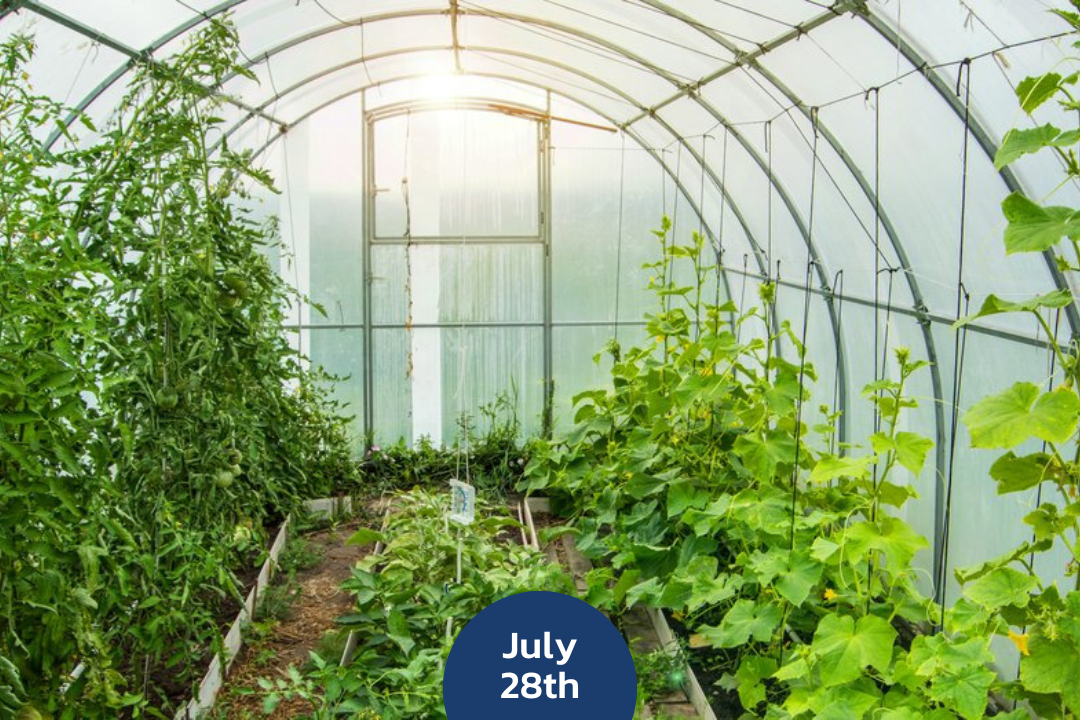Build a Solar Greenhouse to Elevate Your Garden

Growing your own fruits and veggies is a rewarding pastime — and it’s good for your body, mind, and spirit. And when you have a solar greenhouse, you can reap those positive benefits all year long while also caring for the environment.
What Is a Solar Greenhouse?
All greenhouses use the sun, but solar greenhouses harness that solar power for more than just growing tasty veggies. Traditional greenhouses made of glass or plastic usually rely on fossil fuels to provide additional heating needs during colder months. A solar greenhouse, on the other hand, creates a warm, nurturing environment all year long using nothing more than natural materials, energy-efficient design, and the power of the sun.
How to Build a Solar Greenhouse
If you’re ready to get your hands dirty, here’s what you need to know to build your own little piece of gardening heaven.
-
Pick the perfect spot.
Before strapping on your tool belt, make sure the patch you pick receives optimal sun exposure. Situate your greenhouse so that it faces south, with a slight orientation to the east. This helps maximize early morning sunlight and offers some protection from overheating in the late afternoon. It also ensures full sun exposure during the winter when the sun rises in the southeast.
-
Create a workable footprint
Determine the square footage you need and plot out the layout of your garden. Consider things like the room you will need to move between planting beds and rows comfortably. The overall size of your greenhouse should be based on how much planting area you need to produce and the amount of food you want to grow.
-
Select the right materials
Because solar power runs the whole show, you need to use a material that will let at least 70 percent of the light through (transmissivity) while minimizing energy loss (R-value). You will maximize your garden’s production when you have a balance between those two variables. Polycarbonate is a sustainable material that can provide the appropriate amount of transmissivity and R-value.
-
Insulate your space
To keep your garden thriving all year long, your greenhouse needs to be able to trap solar energy and provide heat during cold weather. This is where that R-value can really make a difference. Select the level of thermal resistance you need based on the number of growing seasons you plan on. The northern wall needs to be fully insulated — but if you’re in a colder climate, you may want to insulate the east and west walls as well as the floor and the perimeter. Speak to a local nursery or greenhouse designer to find out the R-value and insulation recommendations for your climate.
-
Let some air in
Ventilation is a crucial part of keeping your plants healthy and cooling down your greenhouse. Fresh moving air also helps cut down on pests and diseases. The most sustainable solution is to maximize natural ventilation: install intake vents down low and place exhaust vents up high. Cool air will enter through the intake vents, rise as it warms, and exit through the exhaust vents. You can control ventilation with automated solar-powered vent openers and/or exhaust fans.
-
Use thermal mass
Materials that are capable of storing heat and energy supply thermal mass to your greenhouse. Thermal mass is especially important if you plan to grow throughout the winter. Water, stone, used concrete, and cob are all good thermal mass sources. Depending on your space constraints, you can install large drums of water or use stone or cob on the floor or north wall.
-
Get soil and irrigation right.
A greenhouse creates an environment that makes plants grow faster, bigger, and longer. To support optimum growing conditions, you need the right soil. Do not build on a concrete slab, as it will prevent access to nurturing subsoils. Instead, build on the ground and add compost and mulch to keep the soil full of nutrients. Use a rainwater drip irrigation system to harness the power of nature further. Rainwater is free of chlorine and other additives and naturally contains nitrogen, which your plants need.
Now that you know the basics of building a solar greenhouse look for plans that meet your needs and get started. Happy planting!
Categories
Recent Posts











